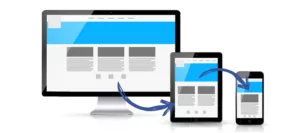Well! Every day the preferences of people change; the thing that was popular even on the previous day is no more relevant today. This is a brutal reality of the internet world. Here, things are becoming viral every now and then. There was a time when web designers used to create a single layout and people used to access the page only on desktops. Things have definitely improved 1000 times now. There are a number of hand-held devices that people use to access a single page. So, web development companies like Intlum are always trying to do something innovative so that the user experience can be improved. The whole concept lies in the core section of responsive website design. There are 7 essential things that you need to know about this design approach. Let’s decode them one by one below.
1. It is All about User Experience
One should always remember that we are going to transform the whole desktop experience into the mobile experience. So, it is important to consider how the users would interact with all the design elements.
Not every design element is essential when we are talking about mobile responsive. In fact, in most of the cases, users do not even go to the last section of a particular page. So, to provide the visitors with a premium experience it is important to consider only the elements which a user mostly seeks.
2. Don’t Consider the Latest Mobile Screen Size
Yes! This is a blunder that designers often commit. It is not a good practice to design a particular site keeping in mind a newly launched mobile. Because it is never going to fit all the screens. Rather, as a designer, you need to work so swiftly that it fits any mobile irrespective of its model number.
A layout or a design element reacts completely differently across devices and platforms. So, keep that thing in mind which making a site responsive.
3. Play around the Engagement
The main reason of making a responsive website design is to provide a beautiful experience for the readers. Many designers often forget the main purpose of a website. They stuff the pages with loads of information having little or no relevance at all with the theme of their websites.
Suppose, if a website wants people to subscribe, then the subscribe button must be at the top of the page otherwise it is of no importance. If the button is embedded between loads of texts or at the end of the page, then eventually very few people would notice that. So, a successful responsive web design should always make these things sure.
4. Image Scaling
It is of no wonder that not only the web pages but also the images would be scaled according to the screen size. This step demands a depth of coding knowledge. Every screen shows a percentage of the parent image; the concept is indeed quite interesting.
5. Don’t Ignore Navigation
Navigation menu plays a very important role in any web designing. A navigation shows the entire mapping of a particular site to the visitors. Whether it is desktop or mobile, make sure to limit the web pages within 7. It is better to avoid drop-down menus because it creates a menace in the web designing field. A responsive web design means a page with the proper navigation scheme. Here, every design element is important.
6. Flexible Gestures are Always Preferable
The fundamental of a successful design lies in the basic thing. Always try to think from the user’s perspective. The placement, size, and other attributes of each and every design element should depend on the people. For example, if you are trying to create an image gallery, it is better to avoid standard carousel which is basically small dots. It is because our fingers cannot touch or feel small dots. It is actually a wrong design approach that needs to be stopped.
Rather make a gallery where the images can be swiped left and right with your index. It would make the application pretty simple and straightforward. The basic aim should always be to provide a supreme and ultra-modern experience to the viewers. So, the design should follow this protocol.
7. Always Utilize Your Web Browser and Mobile Device
Well! You might need some standard portal to see what you have designed. Don’t worry! Your own portable device can be your best friend here. Design a step and check it at least a few times on your own web browser and also on your mobile.
It is truly necessary to test your design. Otherwise, it might not be possible to create something responsive. In these cases, your device can be your great company indeed.
The purpose of Responsive Website Design or RWD is pretty simple. Irrespective of devices, this design approach gives a beautiful viewing experience. Static web designs are no more valid because it is rigid, irrelevant, and is enough to make a people irritated. CSS styling, Fluid Grids, and also flexible images are utilized while creating a responsive website design. It is such a design that web development companies always take care of. Every client these days asks for responsive designs because otherwise a particular page loss its credibility. It is a battleground where every brand is trying to win over each other. A successful website design requires a lot of effort and a few tips to know. These 7 tips are definitely what you need to make a great responsive web design. Don’t you think it is quite interesting?








